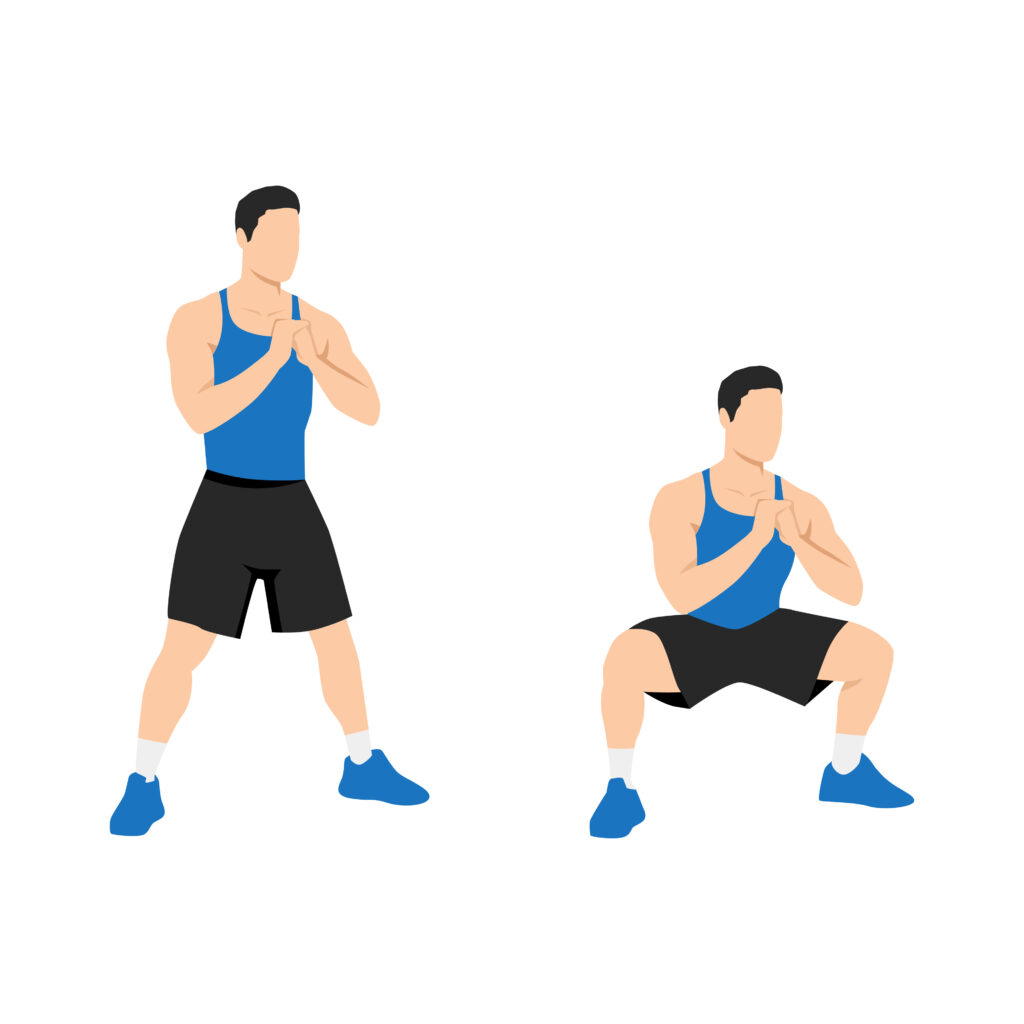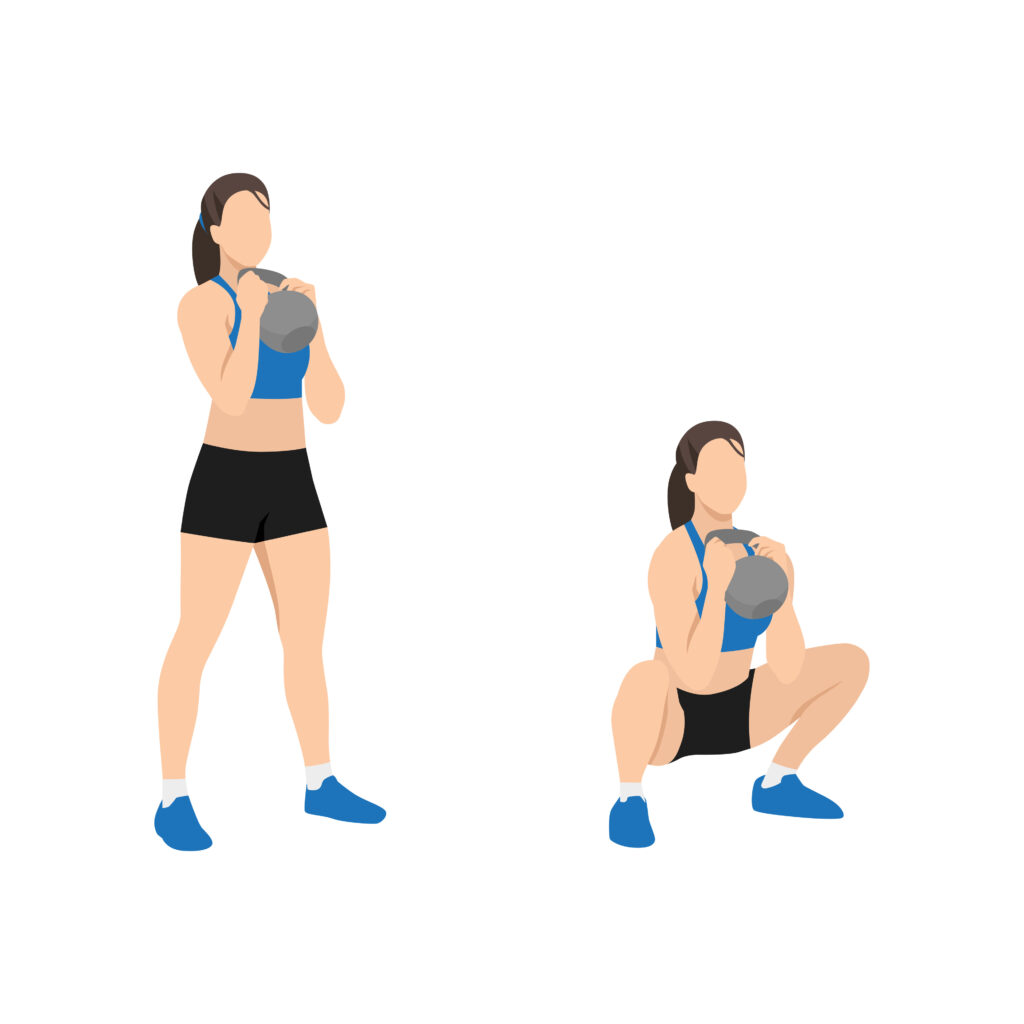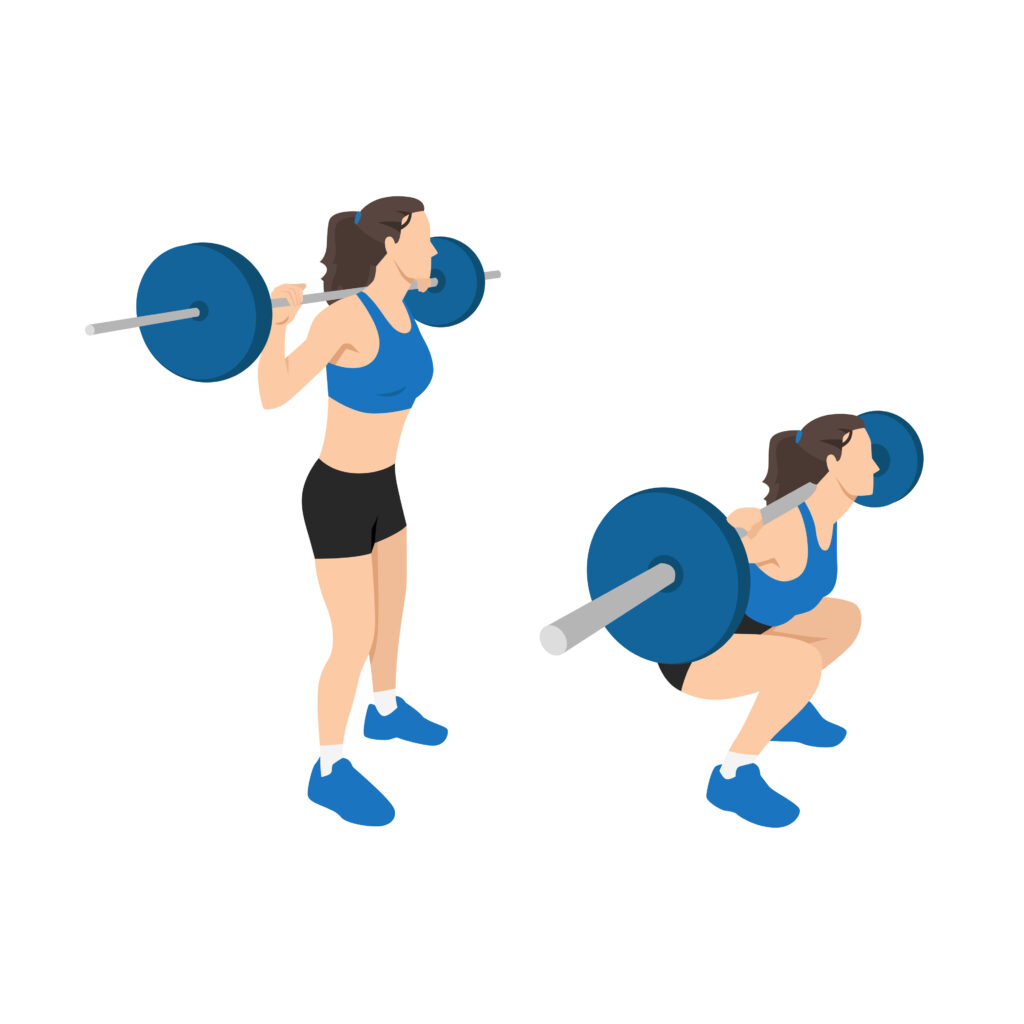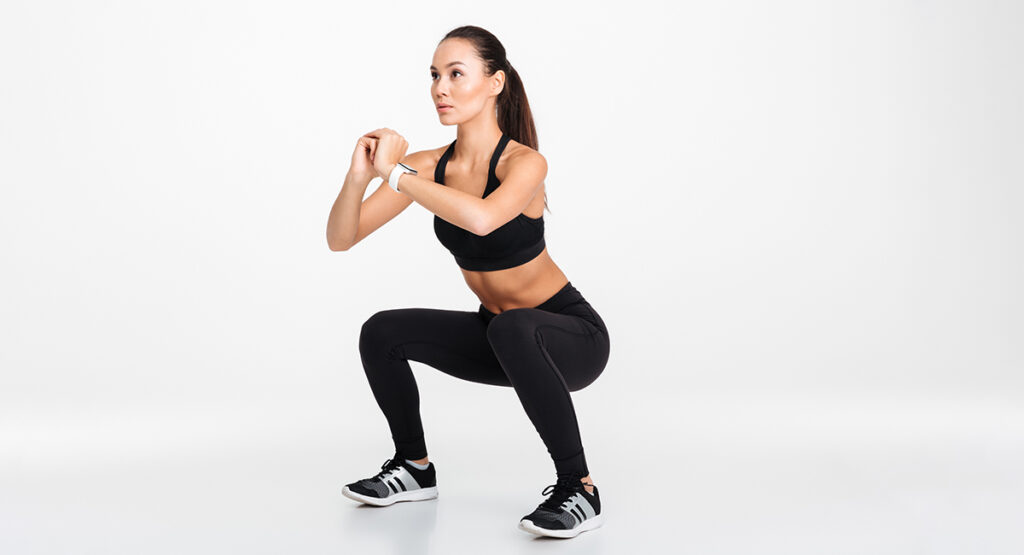Lower Back Pain From Squats? How To Squat Without Hurting Your Back
How to avoid back pain when squatting!
As humans, we tend to overcomplicate things. If we find something that’s helpful or beneficial to our lives, we inevitably seek to tweak it, complicate it, and tweak it some more, until it eventually looks nothing like the original. It happens in all aspects of our lives — relationships, nutrition, fitness, work, and so on.
We seem to live by the philosophy described by Barney Stinson in How I Met Your Mother: “New is always better!”

It’s a simple concept, but boy, have we taken it and run. The truth is that sometimes simple is better.
So when you think of the squat — and all the muscles, movement, and form that goes with it — what do you picture? A powerlifter doing split squats under a bar loaded with five plates and chains on each side? A CrossFit athlete, repping out as many jump squats as they can in one minute? Or a #squatchallenge TikTok of gymbros trying to squat while balanced on a BOSU ball?
These are all overcomplicated (and risky for your back) versions of an incredibly versatile and valuable exercise. The squat is the perfect exercise for those trying to gain strength, improve their mobility, or simply want to get moving. And we’re not just talking about athletes, but anyone who wants to enjoy a better range of motion, balance, and stability in their lower body and core – it’s an exercise that I regularly incorporate into the exercise plans I prescribe to my patients as a Brookfield chiropractor.
But what exactly does a squat do for you? How do you avoid back pain while doing them? And why should you even bother trying to understand squat biomechanics?
The Many Benefits of the Humble Squat
So, what kinds of benefits can someone really gain from something as simple and “rudimentary” as a squat? The first and most apparent benefit is gained in strength – squats are a great start to the process of gaining strength in individuals who either have a low level of activity or a low tolerance for vigorous exercise.
Seniors, especially, can benefit significantly from adding squat exercises to their daily activity – a 2005 study saw huge increases in dynamic balance, agility, and strength from a 10-week squat-focused fitness class for seniors.
But the benefits don’t stop at strength increases. The necessary activation of the lateral knee and ankle, core, and back in performing a squat properly all create subtle benefits that can significantly improve an individual’s balance, stability, strength, and even tendon elasticity. A 2013 study found that adding body squats to an exercise program significantly reduced knee valgus (also known as ‘knock knees’) and improved ankle range of motion.
Plus, research has shown that the cardiovascular benefits of squatting can improve blood pressure, reduce the risk of heart disease, and improve your overall quality of life.
What Causes Back Pain While Squatting?
When performed properly, the squat is a relatively safe exercise. However, due to the lower back and pelvis being the most vulnerable joints during this exercise, it’s not uncommon for lifters to experience low back soreness afterward.
There are several risk factors that make back pain more likely following a squat workout:
1. Previous injury to the lower back
2. Poor squatting technique
3. Weak core and glute muscles
4. Limited range of movement in joints, particularly the ankles
5. Progressing too quickly when starting out
Squat Biomechanics
Let’s break down some standard squat technique guidelines that need to be followed if you want to avoid putting stress on your lower back.
Footing: Stand with your feet slightly wider than shoulder-width apart. Rotate your feet out 20-30º and keep them flat on the floor throughout the entire exercise. Studies have shown this slightly turned-out foot position allows easy access to the full range of motion in your hips while minimizing the loading forces on your lower back.
Balance: The squat is a balancing act; your center of gravity needs to stay directly over your mid-foot throughout the entire movement. The second you let your center of gravity drift away from its ideal vertical path over the middle of your foot, you’ve lost balance and you’ll start arching or rounding your back.
It might be difficult at first, but the more you do it, the better you’ll be at finding and keeping your balance.
Movement: Often the most challenging part of the squat for beginners isn’t the “muscle activation” stage where you push back up to the standing position. Instead, problems mostly happen during the initial downward movement.
By far the most common mistake when performing the downward movement of a squat (and the number one cause of back pain associated with them) is the tendency to lean too far forward, sticking your butt out and putting strain on the lower back. Your focus should be on keeping your shoulders back and maintaining an upright torso position.
No matter who you are, what style of squat you choose, what body type you are, or how much weight you’re squatting – you need to keep your torso upright with your chest forward. If you take away just one thing from this article, it should be this.
This is something that a huge number of gym-goers struggle with, but it’ll get easier with practice (I promise!).
Knee Positioning: Another common problem when learning to perform a squat correctly is the knees collapsing inwards towards each other during the descending part of the exercise (also known as knee valgus or ‘knock knees’).
The good news is that this is often simply due to a lack of strength in the leg stabilizing muscles (specifically the glutes), so it usually improves quickly as long as you focus on keeping your knees directly over your toes.
Depth: While proper squat depth has been debated endlessly, it’s generally accepted by exercise physiology experts that squatting to a 90º angle at the knee (where your thighs are horizontal) allows for the full range of motion without putting undue stress on the knee joint.
So where do we start? Do we need a barbell? A squat rack? For bodyweight squats, none of the above – the only thing required is you!
Level 1: Bodyweight Squats

We’re going to start with simple instead of new – and that means bodyweight squats. Bodyweight squats are a great entry point if you’re looking to get the benefits of lower-body and core mobility and strength, without the higher risk of back injury or cost of adding equipment such as barbells, dumbbells, or squat racks.
Starting out with bodyweight squats also allows you to perfect your form before adding resistance. For the variations discussed here, the resistance, repetitions and sets may change depending on your goals or abilities, but the basic functionality and movement remain the same.
There are different ways to stay balanced during a bodyweight squat. Some may put their arms outstretched in front of them, some may put their hands behind their head, and others may simply find it easier to keep their hands to their sides. Personally, I find it easiest to put my hands in a ‘prayer’ position just slightly in front of my chest.
Level 2: Goblet Squats

Once you’ve conquered proper form in bodyweight squats, the natural progression is adding weight with goblet squats. Goblet squats are essentially the same movement as bodyweight squats, but holding a dumbbell or kettlebell with both hands in front of your chest.
Like bodyweight squats, the goblet position allows for an upright torso position, which keeps stress off the low back.
Many athletes and coaches make the mistake of categorizing goblet squats as a ‘beginner’ exercise. But just because they’re simple doesn’t mean you can’t go heavy. You’ll ultimately be limited by how heavy the dumbbells are in your gym, but feel free to load up on the weight and challenge yourself. Even strong athletes who regularly back squat hundreds of pounds can benefit from heavy goblet squats.
Level 3: Barbell Back Squats

The barbell back squat is the final progression we’re going to discuss, as they’re the squat variation that’s most commonly associated with causing back pain. This version of the squat is posteriorly loaded (the bar sits on your upper back), which requires additional attention to core stability. But otherwise, we’re going to use the same form and movement as we did with the bodyweight and goblet squats.
The secret with barbell back squats is to flex your stomach and glute muscles during the exercise. By doing so you’ll make your back more rigid, allowing you to support the weight from the barbell. This will also help you avoid leaning forward during the squat. Just like the variations above, keeping your chest up prevents you from rounding your spine and putting extra stress on your lower back.
Finally, it’s important to lock your hips and knees out at the top of the squat. Doing so allows your body to distribute the forces from the weight evenly through your entire core, rather than relying on the muscles around the spine.
Squatting is still causing back pain – what should I do?
If you’re still getting back pain despite following the tips above, it’s time to ask yourself these questions:
Are you doing an effective warm-up? Priming all the body’s main muscles is important before a squat. We’ve discussed before how static stretching before exercise is actually counter-productive; taking your body through an exaggerated version of the normal range of motion with lunges, jump squats, and high-knees is a much better option.
Are you seeing a chiropractor? Sometimes changing your form isn’t enough. At Ascent Chiropractic, we’ll identify the source of your back pain while addressing your squatting technique and biomechanics.
The Bottom Line
If some of these guidelines are challenging at first, don’t stress too much! The more you do it, the easier you’ll find they are to do until you can perform a proper squat without even having to think about it.
When done correctly, squats are a fantastic full-body exercise that should be incorporated into pretty much every strength training workout program.
And remember, while you can expect to experience some degree of delayed onset muscle soreness when you start any kind of exercise program, pain is never normal. Pain is the body’s way of saying something is wrong.
Whether you’re a pro athlete, weekend warrior or just looking to tone up, study after study shows that regular chiropractic care is an essential part of getting out of pain and reaching your full potential. Ready to get stronger and looking for a chiropractor in Brookfield WI? To make an appointment at Ascent Chiropractic, call 262-345-4166 or schedule an appointment with our online scheduling app.


